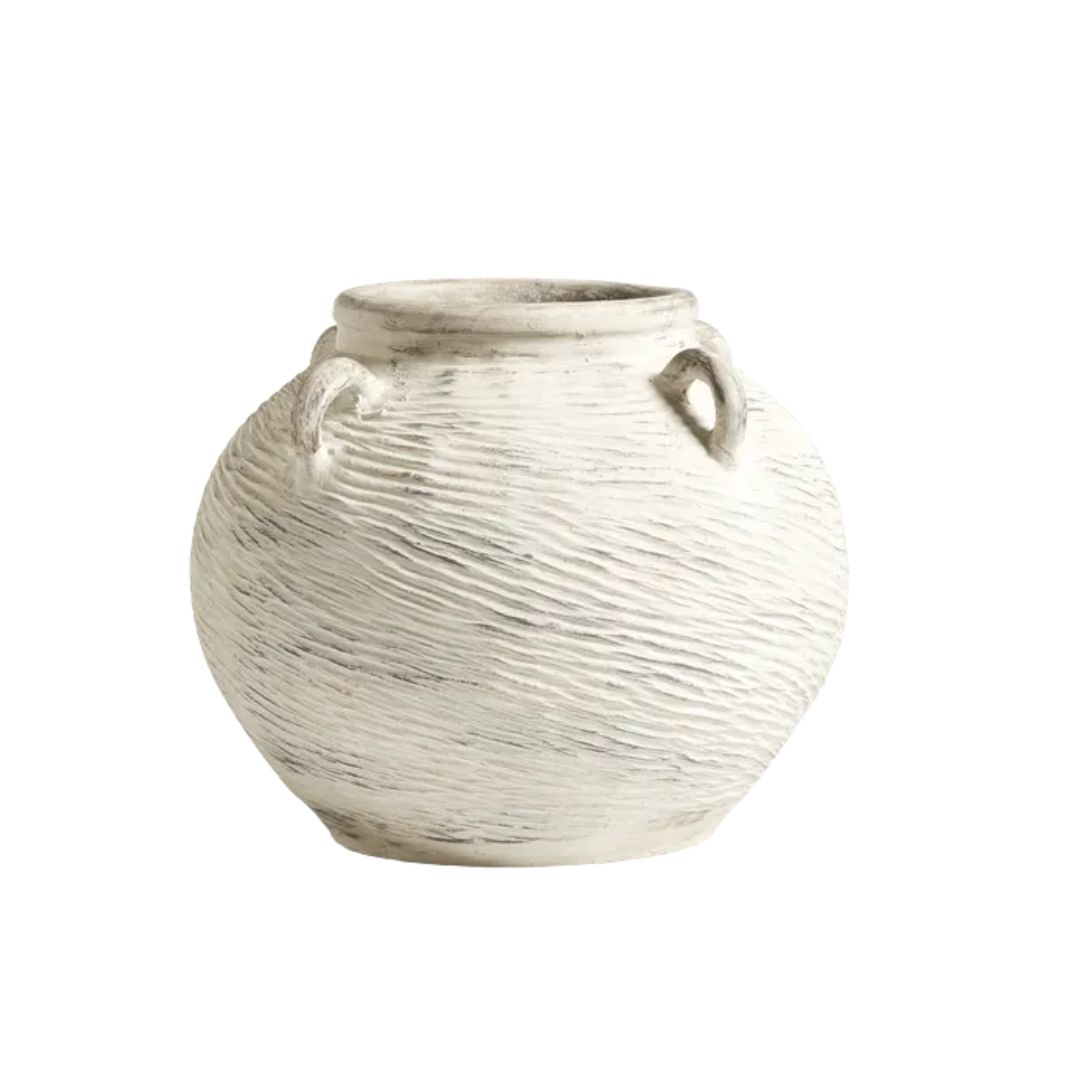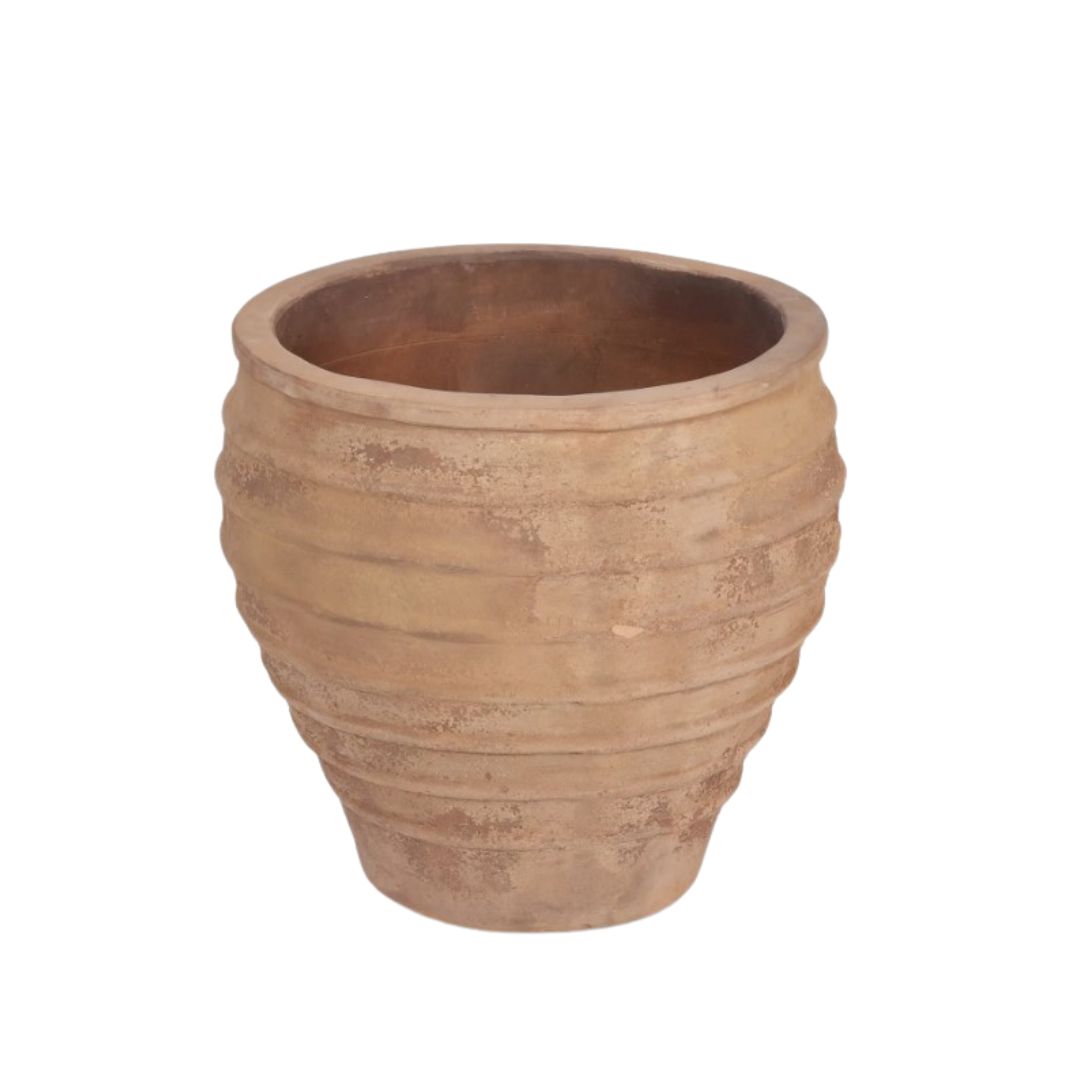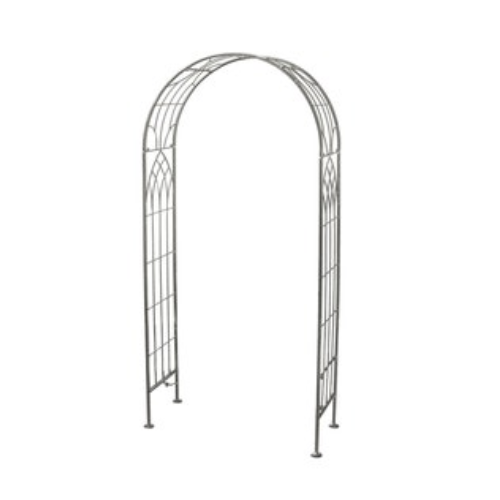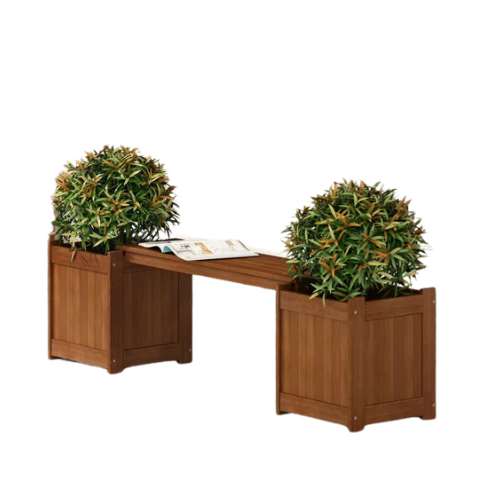15 Urban Garden Ideas That Will Make Even Busy City Spaces Feel Like a Retreat
Garden designers and landscapers explain how to get the best from urban outside spaces
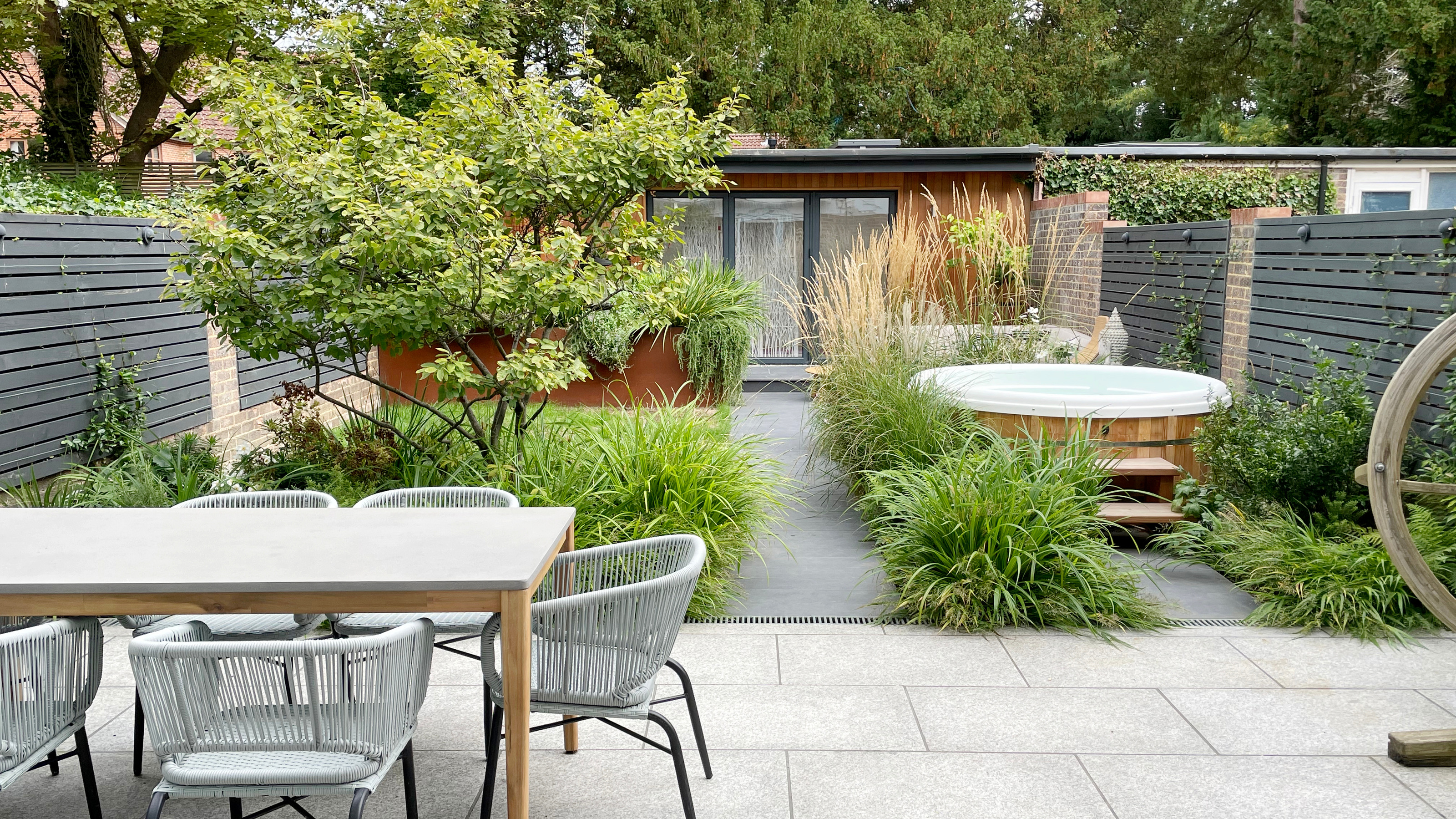
Maya Glantz
"Necessity is the mother of invention," and this saying is particularly true when it comes to urban garden ideas. When faced with small outside spaces, garden designers have to work smart to get these petite plots to work. Consequently, they have bags of inspiration and creative ways to overcome the challenges.
So if you're unsure what to do with a compact outside space in a city, we have plenty of modern garden ideas for you. Whether it's a small garden, a roof terrace or balcony, there is much that can be done to create a verdant oasis, a lush, low-maintenance landscape, or an enjoyable spot to entertain friends and soak up some sunshine.
There is something to suit any type of small outside space or level of gardening ability. So forget sad lawns, skinny flower beds, and bare spaces, and create an inviting outside space with urban garden ideas from professional landscapers and garden designers.
"Obviously, space is often an issue in urban gardens," says Kat Aul Cervoni, landscape designer and founder of Staghorn Living. "Smaller spaces require more creative ways of squeezing in plants and creating layers so as not to feel diminutive, but there are other issues to work with too."
1. Embrace a Palette of Green
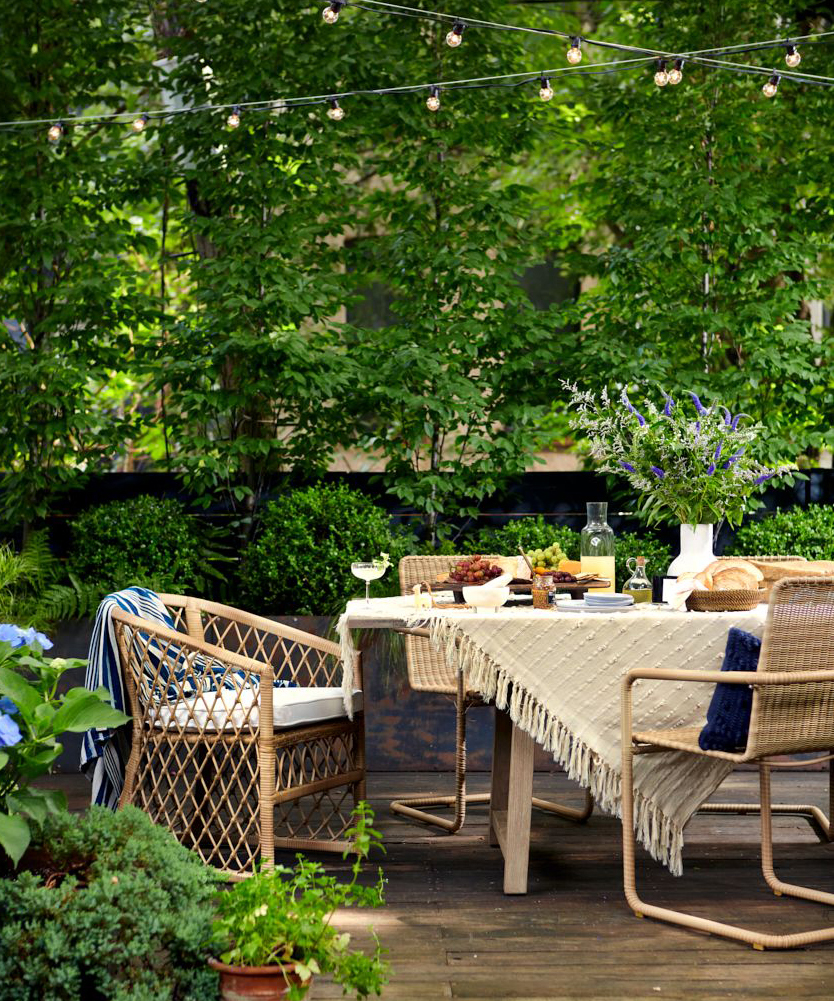
In a small backyard in a city, you might think that the size of the space is the only challenge, but there are often more issues to overcome: from surrounding properties casting shade to a lack of access. The good news is that these constraints push garden designers to be more inventive with their plant choices. The result is interesting combinations that rely on shape and texture, as much as color, to create a calming space.
"In my opinion, other than size, the biggest challenge faced by folks with urban gardens is the lack of sunlight, drainage, and airflow that a space has," says Kat. "It's not that these are impossible conditions to work with, but it does narrow down the palette of plants that will thrive there. It can also be difficult for beginners to know just how shade tolerant they need their plants to be.
"Instead of fighting the fact that you don’t have sun, lean into a rich, varied plant palette of different shades of green. Emphasis will be more on texture, mass, and variations of green. Mix finely textured grasses like carex and hakonechloa with broader leafed shrubs like aucuba, skip laurel and rhododendron. Some broad-leaf perennials such as farfugium, ligularia, hosta, or asarum."
The Livingetc newsletters are your inside source for what’s shaping interiors now - and what’s next. Discover trend forecasts, smart style ideas, and curated shopping inspiration that brings design to life. Subscribe today and stay ahead of the curve.
Kat continues: "Don’t forget ferns; Ostrich ferns have large dramatic fronds up to 3’H while more compact offerings like Tassel fern are great for containers and are evergreen as an added bonus.
"Along with pairing unique textures together, also have fun with shades of green, like chartreuse Hakonechloa 'All Gold' or Carex 'Everillo' next to glossy dark green skip laurel. Variegated options such as false Solomon’s seal, or the silvery foliage of Brunnera, also pop out as fun specimens. This approach works for container gardens or in-ground gardens and can lean towards traditional or contemporary styles."
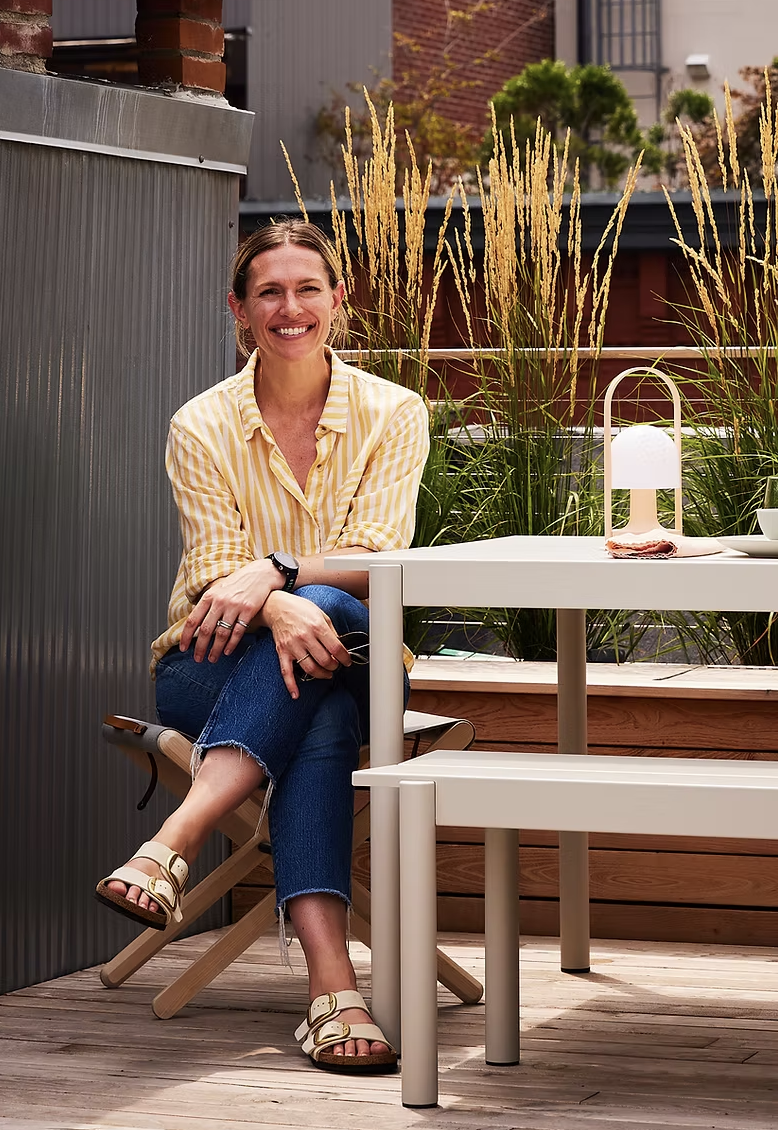
Landscape designer, Katherine "Kat" Aul Cervoni is the founder and principal of Staghorn Living. Kat creates outdoor spaces that become natural extensions of a home’s interior. A member of the Ecological Landscape Alliance and the Association of Professional Landscape Designers, she also mentors young plant enthusiasts and upcoming designers.
2. Choose Water-Savvy Plants for a Sunny Space

Different urban gardens have different challenges and plus points. Where some spaces are surrounded by buildings and require shady garden ideas, others may have south-facing balconies or roof terraces with full sun exposure. These obviously require a different tack. For the latter, Kat advises choosing water-wise plants.
"Another challenge that I most often encounter with folks who are doing balcony gardens is that they don’t have access to a hose bib to easily water their plants, much less irrigate," says Kat. "So they’re required to fill up a watering can indoors and haul it out multiples times to get everything taken care of.
"This can make managing the watering schedule of your planters a challenge, as different varieties and different pot sizes have different demands (and it all takes time). The prospect of hand watering your plants every single day can be overwhelming - and impossible - for a lot of folks, so this approach leans heavily on water-savvy plants that can fend for themselves longer than others.
"Great plants for spaces like this include sedums and succulents including sedum Angelina for a spiller plant, Sedum “Autumn Joy” for dusty pink blooms in late summer. For evergreen presence, I love using dwarf pines such as pinus mugo in these spaces as they’re tough as nails and long-lived. For a larger pine that’s still container-friendly, try pinus flexilis “vanderwolfs pyramid”, or opt for a juniper like “Blue Point” for more height
"Good news if you like lavender, they’ll love a space like this, as will other sun-loving Mediterranean herbs like rosemary and thyme. Plants with a silvery or blue cast to their foliage are often a good indicator that they’re full sun tolerant and water savvy.
"Artemisia, Russian sage, blue fescue grass, eryngium and stachys are other examples. To buy even more time between waterings, use containers with built-in reservoirs for storing water that can slowly be absorbed by roots."
3. Opt for a Few Large Containers Over Lots of Small Ones
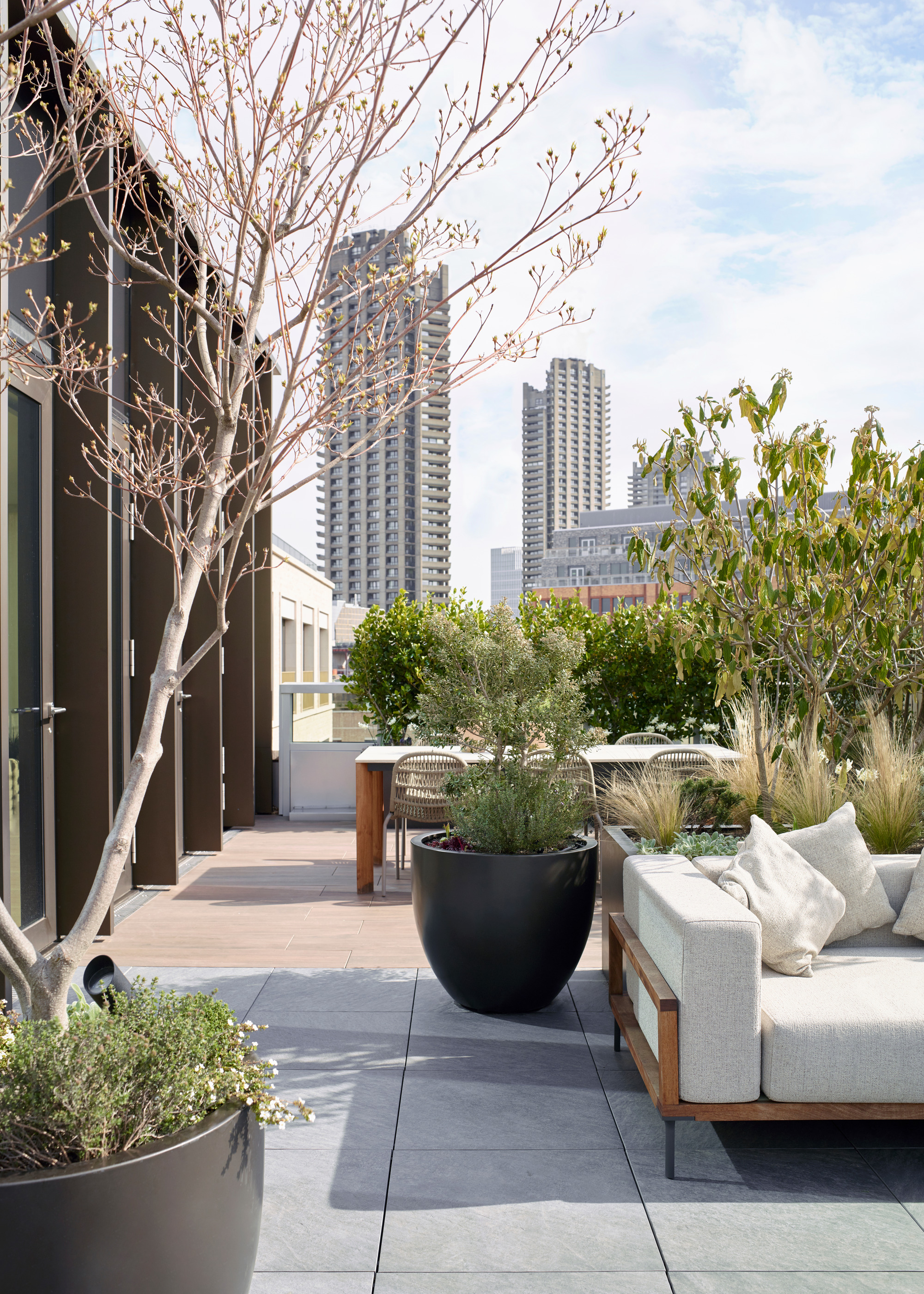
Once you've selected the best plants for a balcony, roof terrace or urban garden, you may want to fill the space with them. However, think about the practicalities as much as the aesthetics. Firstly, consider how much time (and access) you will have to water your plants, as well as where they can be placed to provide shade or enhance your space.
"In some urban gardens, or on a terrace or balcony, container planting is the only option," says garden designer, Alex Hollingsworth, co-founder, Dig. "Containers are a lot more work than planting into the earth, so counter this by having a few containers, which are as large as possible, rather than lots of little ones.
"This is both better in design terms, as it looks more cohesive and considered, and a lot less work. They will dry out less frequently, as there is more soil to keep the plants going. However, water hungry plants like Hydrangeas or roses will still struggle, and drought tolerant tough old favourites will be your friends.
"A Mediterranean theme works well, and in general evergreen plants are more resilient than deciduous plants. Shrubs like Pittosporum and Osmanthus will do well in harsh conditions such as reduced water and poor air quality, as will perennials such as Stachys byzantina, Festuca glauca and any of the Sedums. In general, if it has a grey, or glaucous leaf, it is likely to be drought tolerant."
Tony Woods, founder and MD, Garden Club London concurs "If you are time short and need impact in a small space use an oversized feature planter. Rather than lots of small pots and planters that will require maintenance and watering as well as cluttering the space," says Tony. "A large pot with an olive for a sunny spot or a tree fern for a shady area can elevate the space creating shadows and adding impact."

Alex, a Dig co-founder, grew up in the English countryside, surrounded by beautiful gardens and keen gardeners. She gained a Distinction in her Post-Graduate Diploma in Garden Design, and also holds an RHS Level 2 Certificate in Horticulture. After working for Mazzullo + Russell, a leading London design practice, Alex ran her own successful practice, before joining the founding team at Dig.
4. Hide a Mirror Into the Landscape
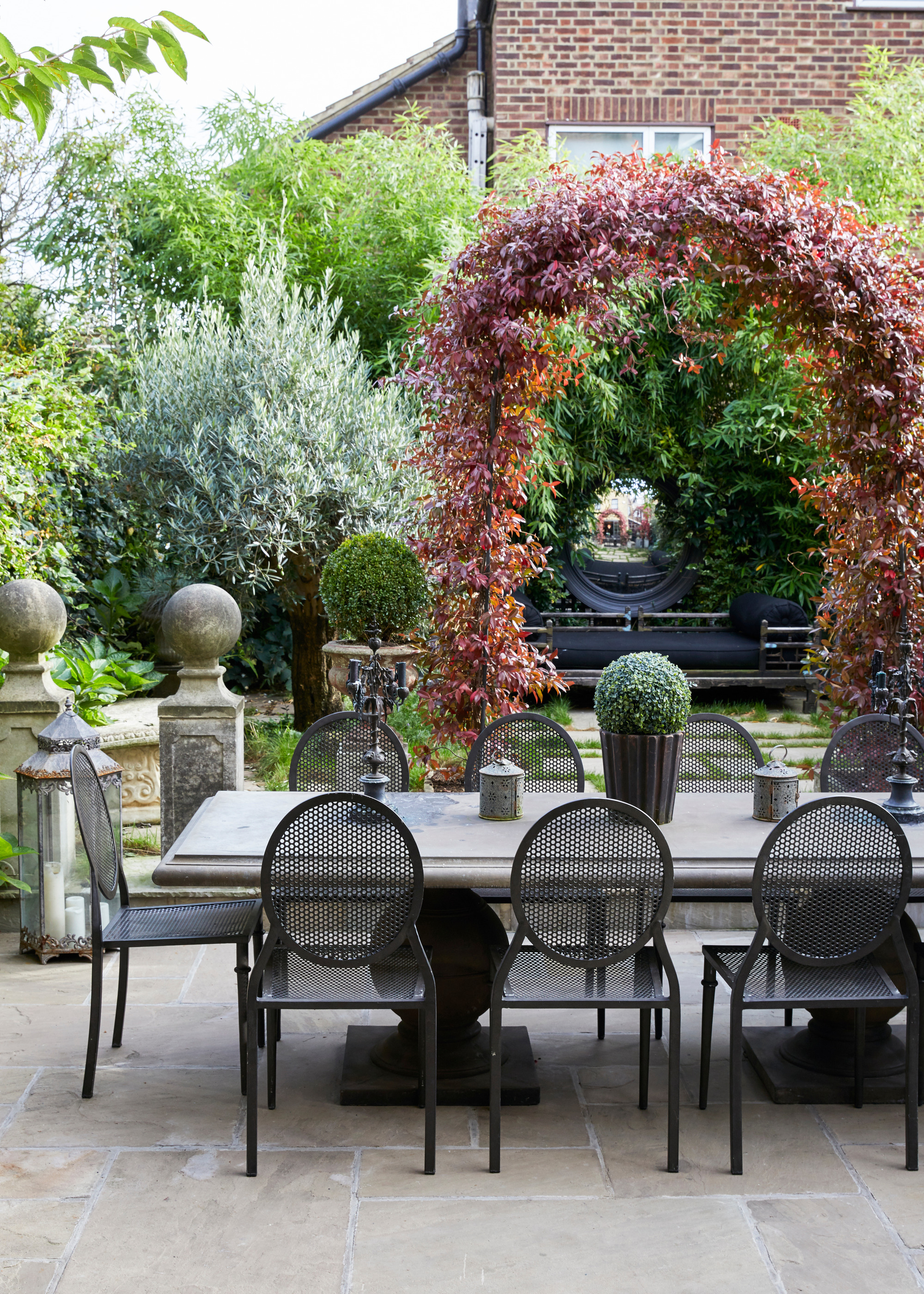
The trend for placing a large mirror in the backyard has definitely waned. No-one wants their garden to look like a cliche – and more importantly, if you live in an area of drought, be mindful of the angle, as sunlight can be reflected from the glass onto combustible materials. However, hidden mirrors situated behind plantings can work in a small shady garden, as a subtle way to increase the feeling of space and light.
"Mirrors in the garden can look a bit naff, and it’s a bit discombobulating to see one’s reflection unexpectedly," says Alex. "However, putting a mirror behind a painted trellis is a more subtle way of achieving the same effect of bringing in light and a sense of space.
"The reflective surfaces bounce light off each other, but the mirror is broken up enough to be almost invisible. For a more traditional look, a diamond trellis covered in a cottage-style climber, like a rose or a trellis, is beautiful, with the added bonus that the blooms are multiplied by their reflections. "For a more sleek or contemporary look, horizontal slats with the same width of mirror between then work well, and can be left without climbers, or perhaps a glossy evergreen like a trachelospermum jasminoides."
Tony agrees. "Hiding a mirror is a great way to reflect light and add depth to a small garden," he says. Be careful not to make the mirror too obvious, or the effect will be ruined, and think about what is being reflected. Mirroring a drainpipe or window is not ideal, so tuck a sheet of exterior-grade mirror behind planting or a trellis and slightly angle away from reflecting onto greenery for the best effect."

Tony Woods is the founder of Garden Club London and an RHS Chelsea Flower Show Gold medal winner, author and passionate horticulturist. Tony creates garden design concepts and develops planting schemes with an expert eye for detail. He is a fully registered member of the Society of Garden Designers and accredited BALI Designer.
5. Green Up the Walls
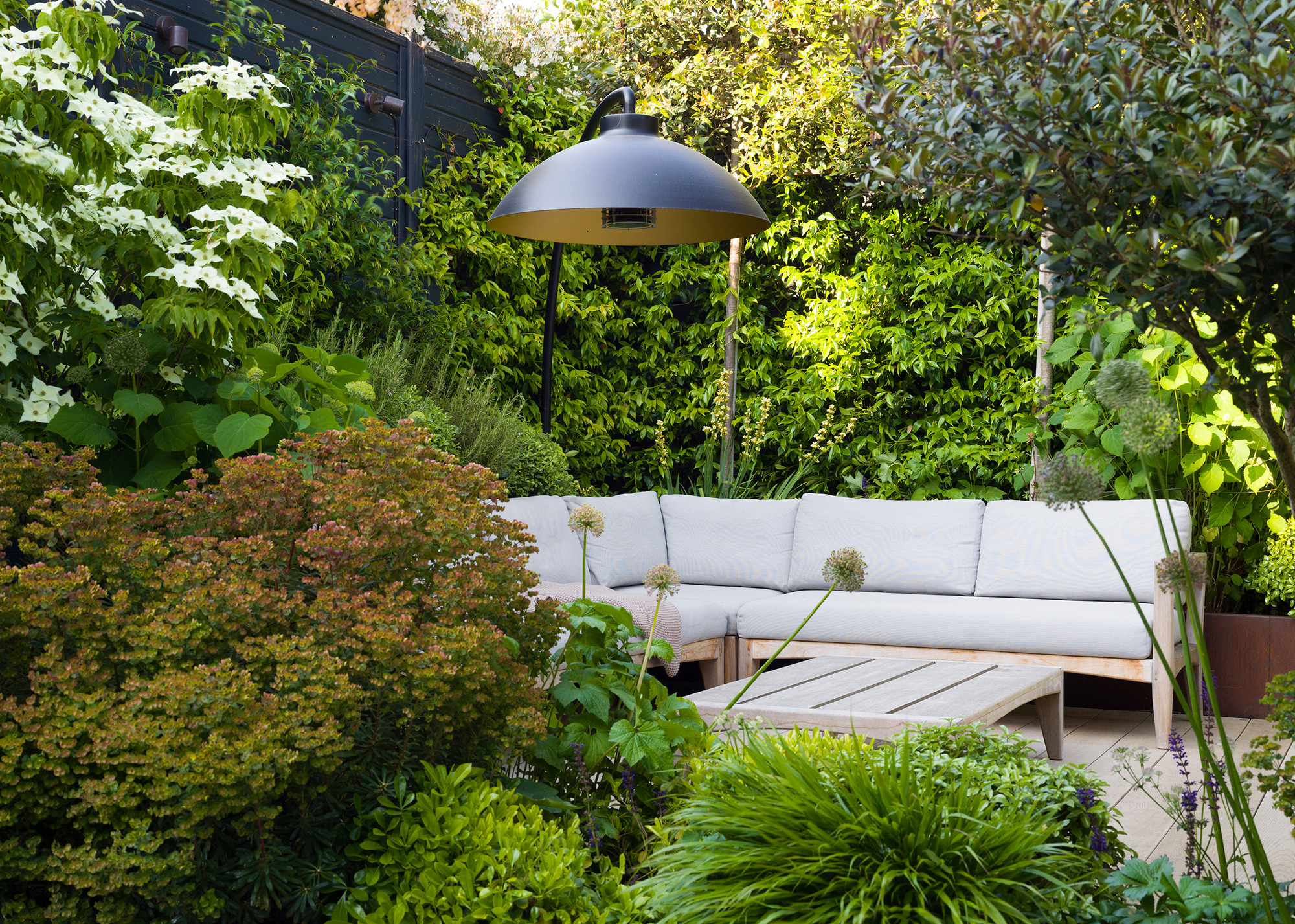
Vertical planting is a must if you want to make an urban garden feel lush. It's also a great way to make small garden feel bigger, as the greenery will blur surrounding boundaries. Plants growing in front of hard surfaces, such as brick or concrete walls, will also absorb pollution and sound, if noise is an issue.
"This is great for spaces that have large blank walls, such as a neighboring building, a retaining wall, or long expanses of fence in an otherwise narrow space," says Kat. "For a full-on blast of green, train vines like climbing hydrangea or Boston ivy onto your fence or wall. This can take time to get good coverage, depending on all conditions, but the effect is beautiful. Although hard pruning of these vines can stimulate tons of new growth and help get thicker coverage more quickly.
"Wall-mounted planters are another great trick for adding more greenery to your garden without taking up floor space. In sunny locations, I love planting up smaller ceramic or terracotta planters and filling them with sempervivum and sedums that trail down over the sides of the planter. Have fun with the arrangement of planters - it can end up feeling like a cool art installation.
"In other locations, I’ll use a long narrow/shallow planter that’s built-in the fence or can be mounted with steel brackets so as not to sag under the weight of plants and soil. This can suit any sun condition, but be sure to include some plants that cascade down (think, creeping jenny, vinca minor, or dichondra “silver falls”) for a gorgeous water fall effect."
6. Install Built-in Seating and Planters With Storage
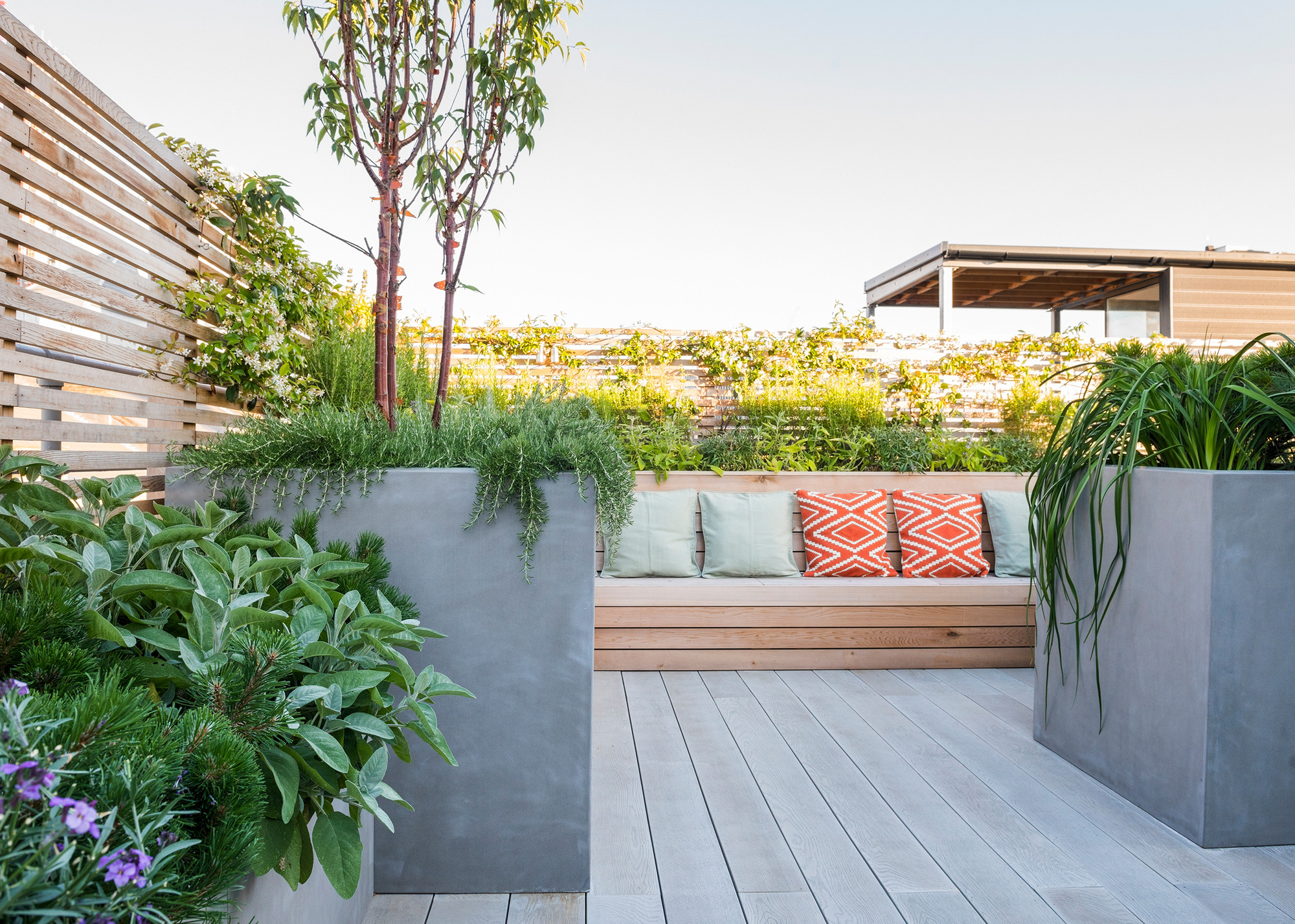
Urban gardens often require being savvy with the available space — or lack of. This is where built-in seating and planters with storage earn their keep as a modern outdoor furniture idea. Whilst they may be more pricey to install than free-standing furniture, they will save you space and ultimately, enable you to enjoy your garden more. These multi-purpose pieces usually offer storage for cushions or garden tools and other outdoor paraphernalia in the structure.
"Built-ins are great when a garden needs to be multi-functional," says Kat. "When space and budget allow, I love designing custom built-ins that include seating, storage, and planters. This is one of the best ways for adding plantings, dimension and layers through height, as well as seating, without taking up much space.
"The bonus with built-in seating is that benches can be built with top-opening lids that conceal interior storage space for cushions, toys, or garden tools. So much can fit into a space as narrow as 24” wide.
"Raised planters are wonderful for a multitude of reasons including making a fully-paved space plantable, adding height and dimension by bringing the base of plants up by between 16”-24” which makes them easier to see, keeping pets and young kiddos from trampling plantings, and allowing you to customize the soil conditions."
7. Include Edimentals
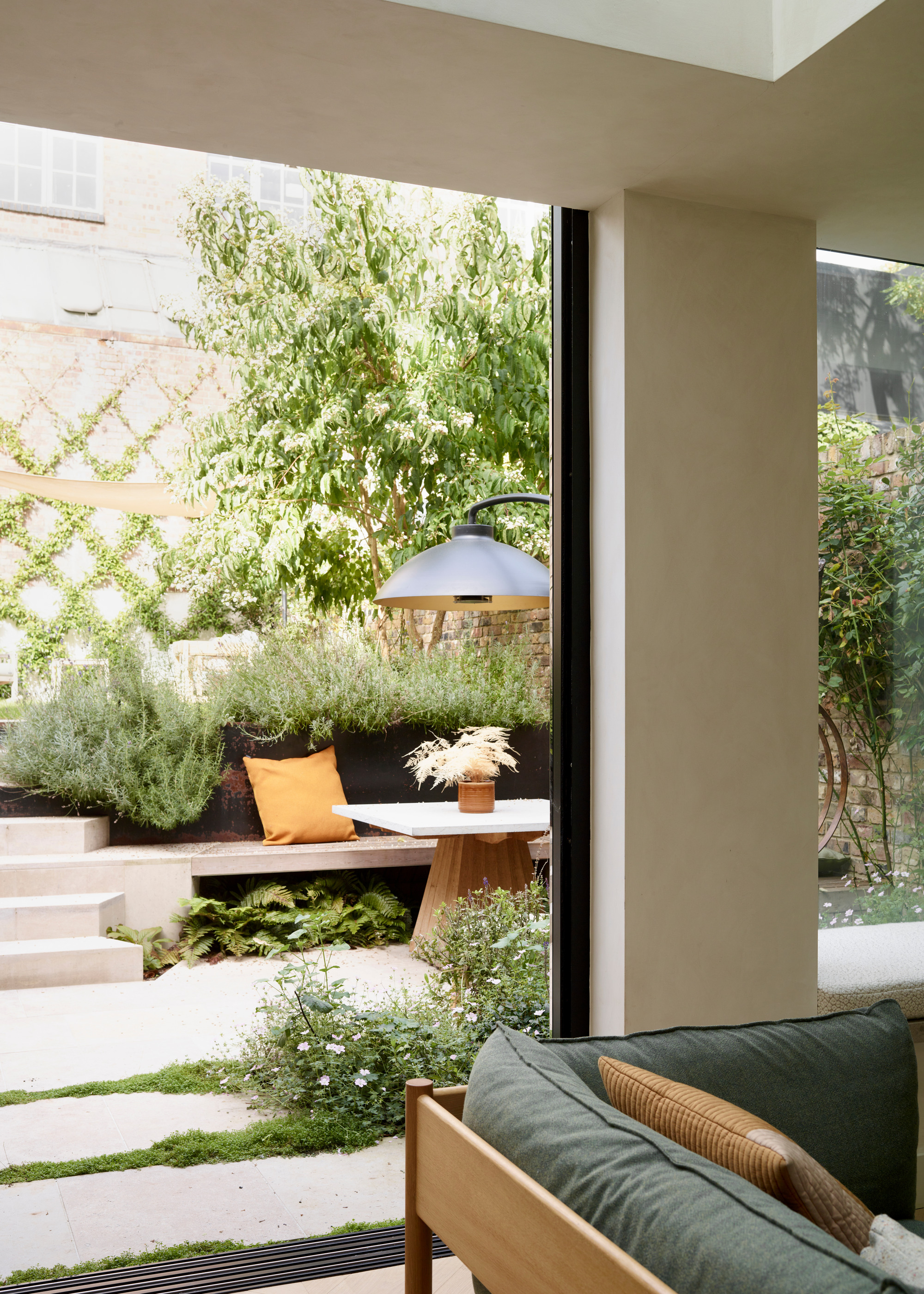
Kitchen gardens are hugely popular but in a compact urban garden you may think it's not possible to have a bountiful veg patch. However, this is where 'edimentals' come into the conversation. It's another portmanteau - this time a merging of edibles and ornamentals - otherwise known as food that's pretty enough for your flower beds. Think fennel, nasturtiums and globe artichokes, just for starters. There are plenty more fruits, vegetables and herbs that can grow alongside your pretty perennials too.
"If you would like to grow your own fruit and vegetables, you may want to design a separate productive plot in the garden, if space allows," says garden designer, Manoj Malde, author, Your Outdoor Room. "However, for those with a small garden or balcony, it's possible to grow your edibles alongside your ornamental plants.
"Remember, some plants, such as chillies and aubergines, provide colour and beautiful shapes, as well as food. Also, use the vertical spaces and include a living wall of herbs and small annual crops, or grow an espaliered fruit tree against a wall or fence."

Manoj Malde is an award-winning garden designer, TV gardener and author of Your Outdoor Room. He is also an RHS show judge, RHS ambassador and Chelsea Flower Show medalist. Manoj is highly skilled at combining colours and textures with planting schemes and attributes his love of colour to his Indian ancestry as well as his background in the fashion industry.
8. Give It a Theme
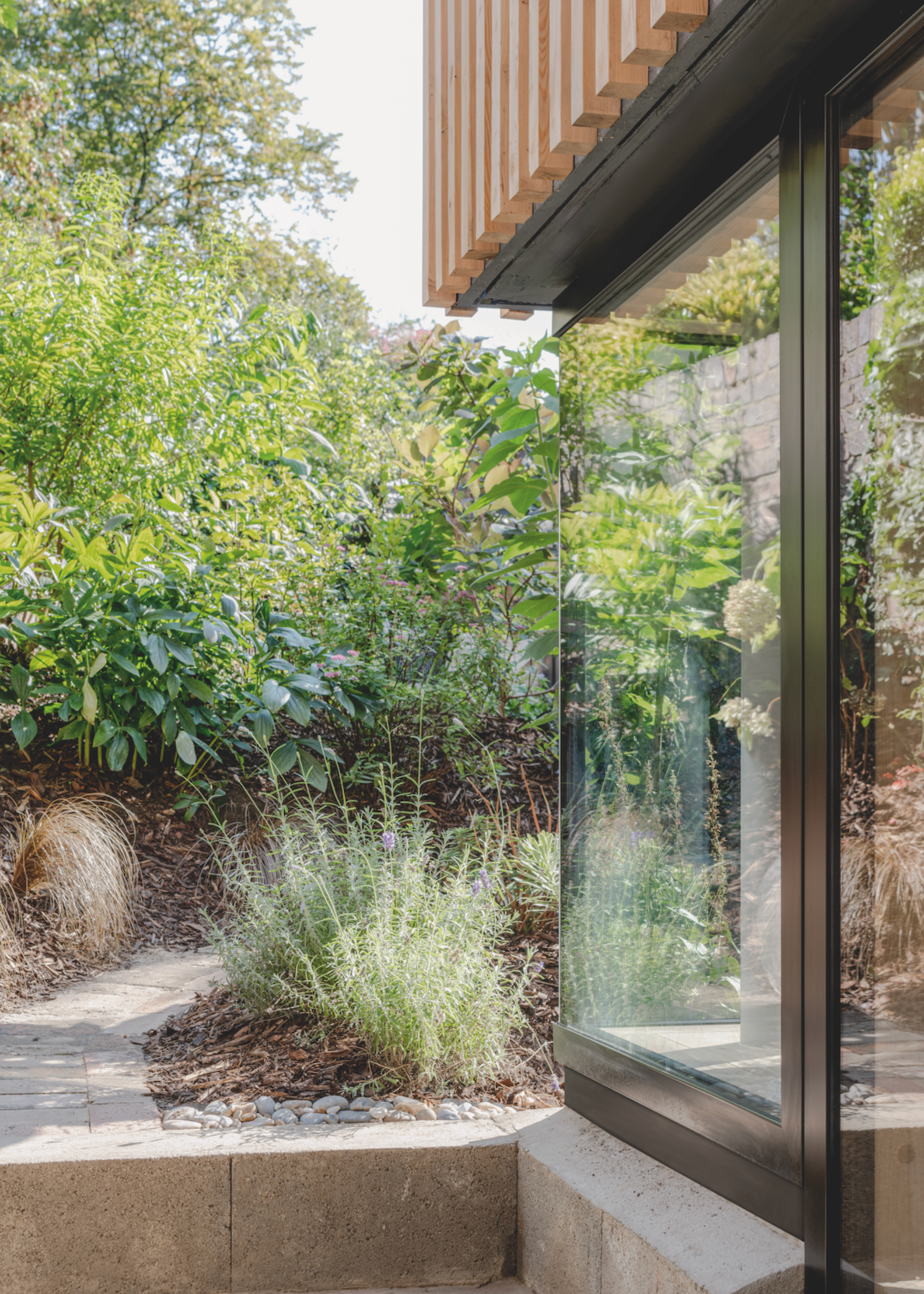
It can make your color scheme, plant selection and hardscaping choices simpler if you have a theme for your garden. Perhaps it's a sun trap and you fancy a xeriscape vibe? Or despite the fact, it's in a city, you'd like the forest garden aesthetic or the tranquility of a Japanese garden?
Assuming you've checked the soil conditions and whether the plants you want will grow in your climate or hardiness zone, choosing a theme gives you a starting point to build your garden ideas around.
"Our homes reflect our personalities and likewise, we should put our own stamp on our gardens," says Manoj. "Thinking in terms of a theme, will help you choose colours, materials and furnishings. It allows your personality to come through, just as it would when decorating a room in your home.
"There may be a particular artist whose work you love, a wonderful holiday you'd like to be reminded of or a culture and its traditions that you're drawn to. The list of themes is endless but could include a cottage garden, bohemian style or the tones of an impressionist painting."
9. Create a Hideaway
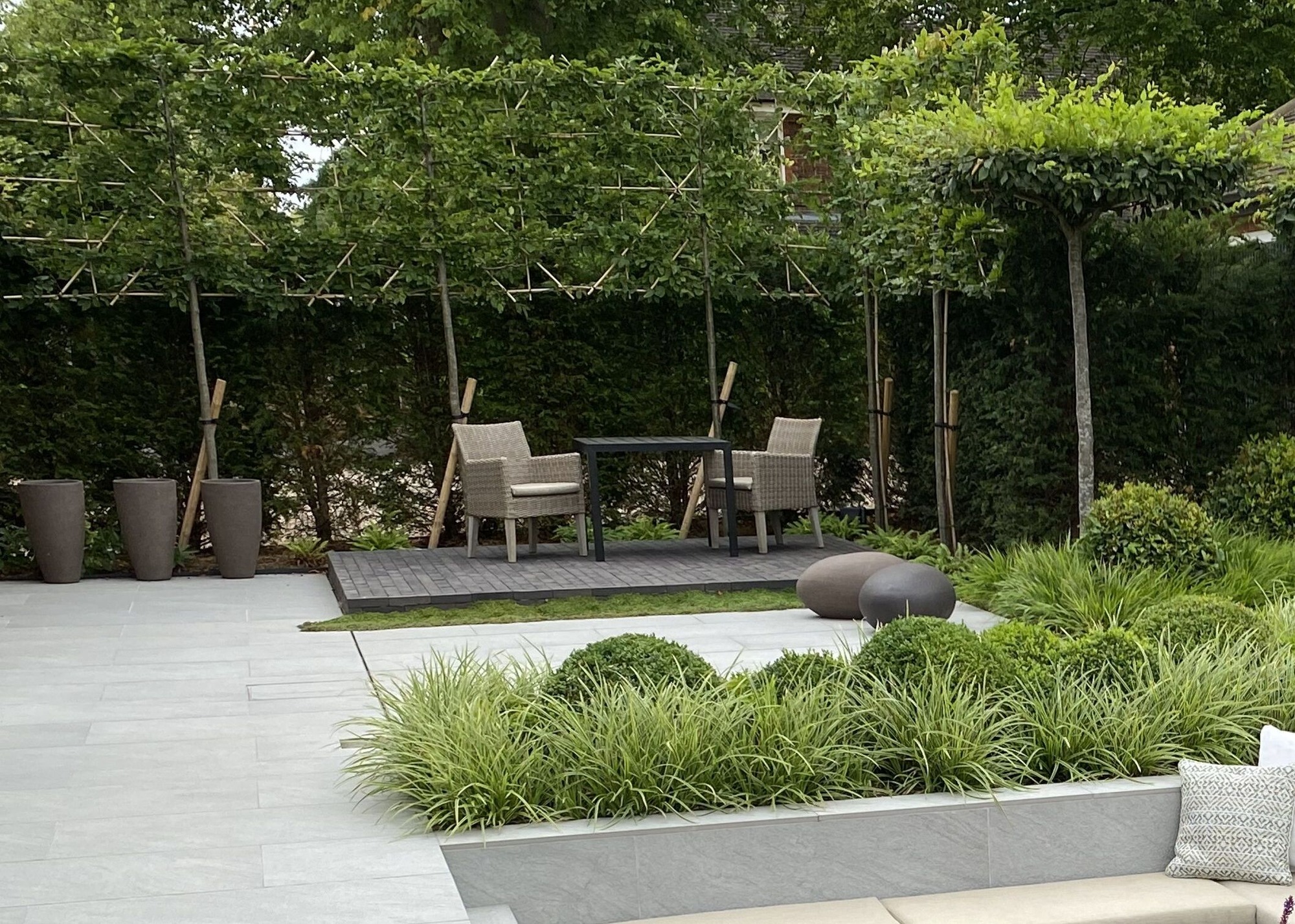
Another issue with urban gardens is often privacy. With such close proximity to neighbors, it's easy for a backyard to be overlooked. There are numerous ways to make an urban garden more private, such as with pergolas, arches and other structures. However, one of the most popular and natural solutions is with strategically placed trees.
"Rather than lining a whole boundary with pleached trees to create privacy, another option is to wrap the trees around cosy seating areas and hideaways," says Manoj. "The vertical trunks will create the feeling of a room, while the canopies provide a screen.
"The pleached trees can be underplanted with tall ornamental grasses. Alternatively, make a screen of tall perennials and grasses of varying heights to surround yourself with colour and texture.
"Or create a natural pergola with seating underneath, using umbrella trees, also known as rooftop trees. These are trained on a frame to form a flat, square canopy, giving cover from above."
10. Consider Repetition and Restraint

Whatever backyard ideas appeal to you, if you want to create a calming outdoor space, remember to keep it simple. Urban gardens are usually surrounded by intrusive sounds and stimuli, so avoid adding to this with visual noise by keeping the color palette limited and with a good balance of furniture and foliage.
"Busy, cluttered spaces are stressful on the eye, and can feel overwhelming," says Alex. "The opposite of this is restraint, where just a few key elements do all the work. For example, a heavily reduced planting palette, repeating the same plant around the space, might seem boring, but it will be much more effective and relaxing than lots of bitty plants competing for visual attention.
"Painting all the boundaries in one colour will have a similar effect, especially if the eye is then drawn to one clear focal point, like one specimen tree or shrub in a large container."
"By repeating the same forms, colours, shapes or textures, you create a visual pacing that leads the eye around the garden," explains Manoj. "You can repeat the same plants, or use different types that share the same shape or leaf form.
"Garden designers often use spherical or cushion shapes in the form of clipped ilex crenata, Pittosporum or yew. These can be different sizes but the same shape. The undulation of these forms adds to the rhythm within the borders. Grasses, ferns, herbaceous perennials and bulbs will work the same way. Following this planting method will not only unify your borders but also help to minimise their maintenance."
11. Design for Your Surroundings

The most important aspect to consider when designing your urban garden is something you've perhaps never even heard of before; the urban heat island effect, otherwise known as the UHI.
Paula Napper, from Chalcot Garden Designs, explains this phenomenon and tells us: "Hard surfaces such as concrete, rooftops and tarmac will store solar radiation during the day and release it slowly at night, elevating the ambient temperature. Coupled with the fact that buildings reduce the cooling effect of the wind, this means that city gardens can feel very warm and airless."
As anyone who has spent the summer months in an urban setting can tell you, the infrastructure of modern cities is simply not equipped for the heat of summer. Dense materials that trap heat leave our streets feeling thick with hot air. This is why you may often find higher temperatures more manageable while you're on holiday. It's not just a case of the holiday mindset. These tropical holiday destinations are built with the higher temperatures in mind, often incorporating lower-rise buildings and lighter colored materials in their designs.
Inevitably, the times you'll find yourself getting the most use out of your urban garden will be in the summer months, and you'll want this space to feel like an oasis escape from the city heat, not a stuffy sweatbox. What that, potentially, means is keeping to small patios in urban areas.
"We keep hard landscaping to a minimum and pack in plants to create shade and humidity," says Paula. "Green roofs on bin houses and garden rooms, wall climbers on south-facing walls, taller shrubs and small trees will cool buildings and patios in two ways: they reduce the absorption of solar heat and release water from leaves by transpiration."
These backyard shade ideas will help you create the outdoor retreat you deserve during the sticky summer months.
Paula set up her own garden design business a decade ago, in 2016, after receiving a professional diploma at Plumpton College under Nigel Phillips FSGD. Inspired by her dream to create a show garden, Paula entered the RHS Hampton Court Place Flower Show and won a gold medal for ‘The Lavender Garden’, kickstarting her career in garden design, and picking up customers across the UK. She has continued to hone her craft, studying at The London College of Garden Design with acclaimed designer Andrew Wilson FSGD. Learning from the impressive collection in Kew Gardens, Paula has a rich bank of knowledge about the unique needs and specifications of various plant species.
12. Enhance Your Space With Climbing Plants
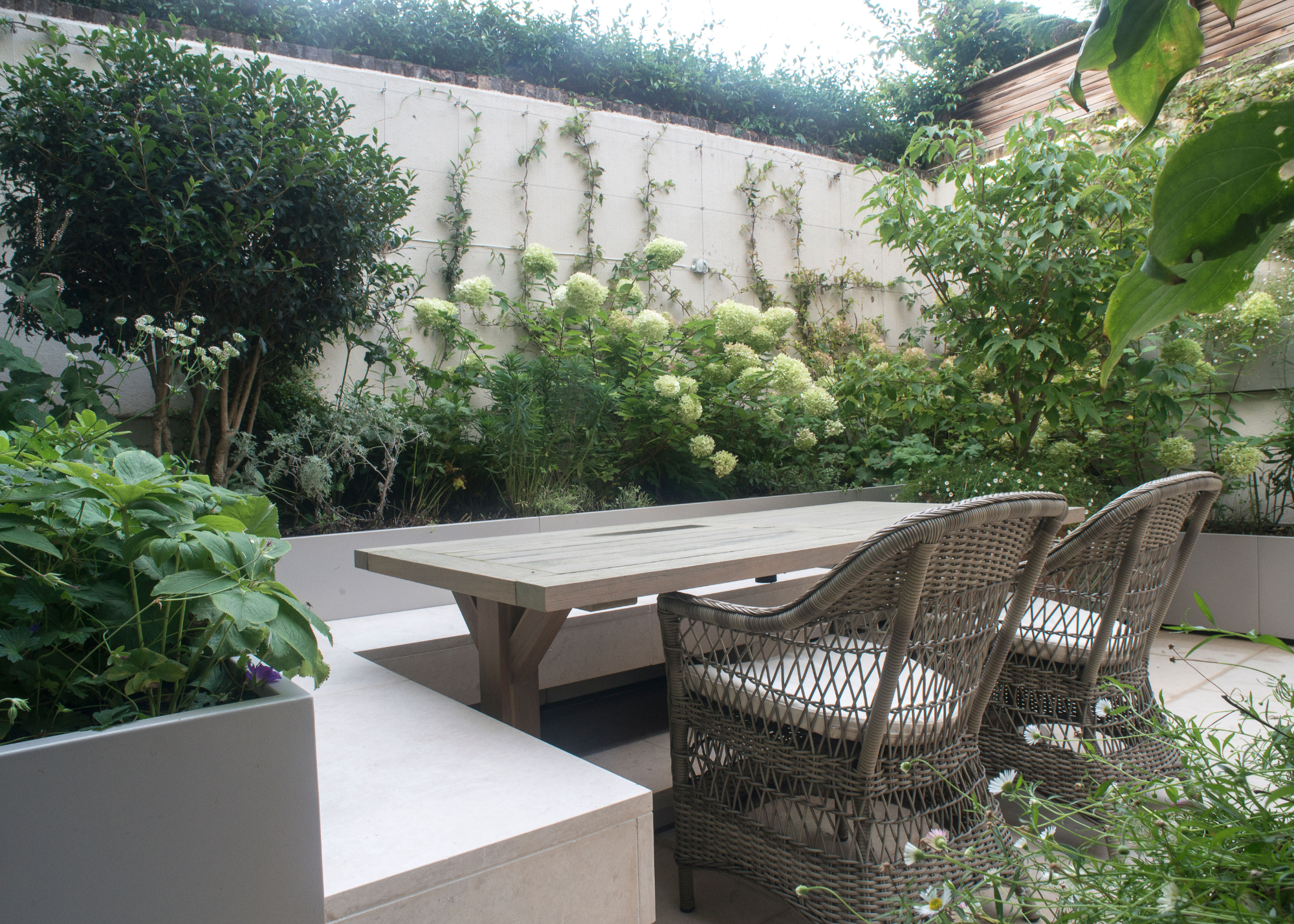
Unless you're one of the lucky few, space is likely to be the biggest issue you'll run into when designing your urban garden. So, any space-saving tricks are always going to be key to making the most of your backyard. "Balancing the scale of elements and plant selection is crucial in limited space," explains Kate, "Therefore, vertical garden ideas, such as wall gardens and planters with climbing plants, are always beneficial."
Unlike other plants and shrubbery, climbing plants take up minimal floor space, while providing maximum impact. Whether you choose to use them as an additional accessory or create an expansive green wall feature, this touch of greenery can transform even the smallest of gardens into a tropical oasis.
"These solutions not only increase greenery but also contribute to softening the architecture, improving air quality, and providing a cooling effect on buildings and their surroundings," Kate explains.
Alternatively, Kate suggests, "In limited ground space, planters come to the rescue. It is important to choose the right size for the intended plants, ensuring proper drainage and watering."
13. Opt for a Design That Lasts
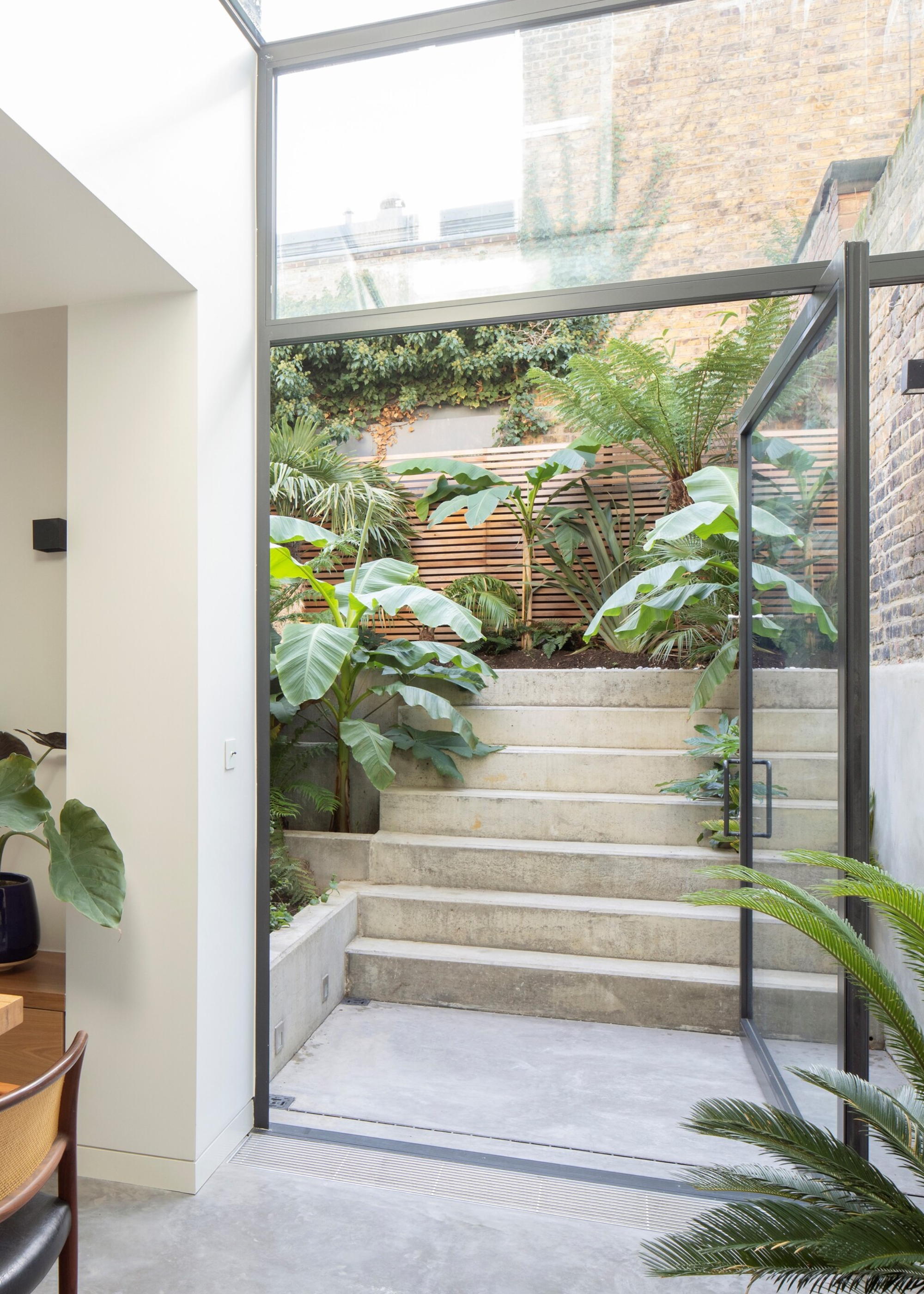
As much as we may like to imagine our alternate life as passionate green fingers spending hours each day tending to our plants, sadly, this is far from reality for most of us.
When you're designing your urban garden, it can be helpful to design with your lifestyle in mind, as opposed to the lifestyle you wish you had. The most important aspect to consider is the lifespan of the plants you choose, and how well suited they are to your city garden. "When planning a planting scheme, I always aim for a garden that looks great all year round, offers seasonal interest, and can cope with increasingly extreme weather – from hot, dry summers to months of rain," explains Agata.
"Evergreens provide structure and colour throughout every season and are easy to care for. In shady areas, I favour variegated and colourful foliage to brighten things up— plants like Fatsia japonica ‘Spider’s Web’, Phormium ‘Evening Glow’, Euonymus japonicus ‘Pierrolino’, and vibrant Heucheras thrive with little fuss and keep the garden looking vibrant in winter," she suggests.
However, your foliage is not the only element of your garden that may not age as well as you would like. "I tend to steer clients away from white rendered walls, especially when paired with cedar cladding. In the UK climate, white render quickly turns green and can start to peel, particularly on raised beds," Agata explains.
"Cedar, while beautiful, requires oiling at least once a year to maintain its warm tones – both are costly to build and even more expensive to maintain. Artificial grass is a firm no. Beyond the obvious environmental concerns, it traps heat in summer, offers poor drainage, may carry health risks, and, contrary to popular belief, still requires upkeep – not to mention the smell!"
Instead, Agata suggests leaning on natural materials instead of grass alternatives, as not only do they last better, but they also bring more character to your backyard.
14. Add Multi-Functional Features
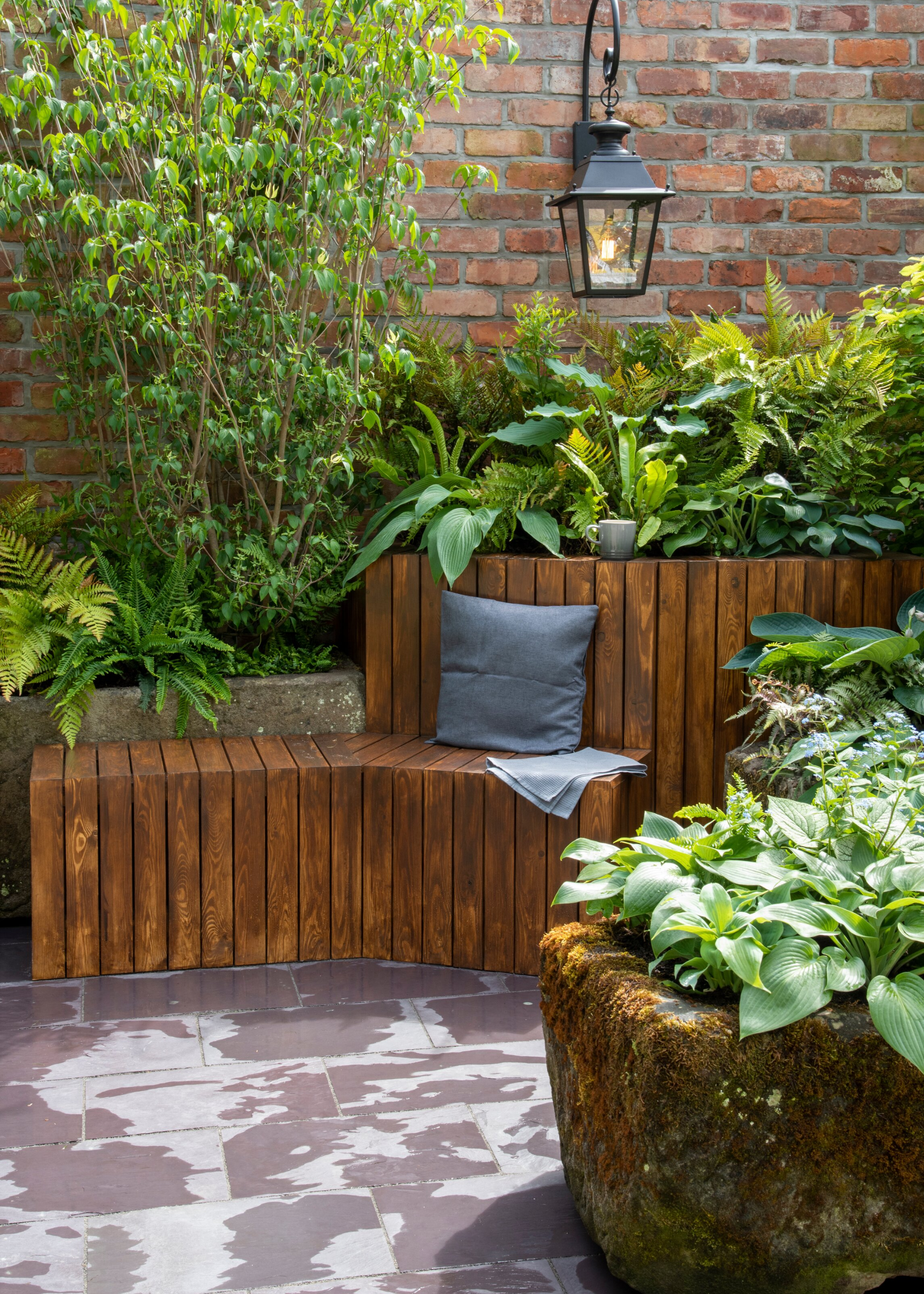
"In compact urban gardens, modular features are the secret for the garden to work," says garden designer Agata Henderson.
In these petite spaces, having elements with multifunctional purposes can help streamline the garden area, increasing its utility without taking away from the space. The last thing you want is for your garden to feel cramped or overfilled, and bringing in a few clever small garden ideas will ensure your backyard maintains a welcoming, open feel.
"A raised bed can double up as a bench. A garden arch might support climbers while also serve as frame for a swing or hammock," suggests Agata, "Even a simple storage unit can transform into a bar or side table for a summer BBQ." These dual-purpose features combine beauty with functionality, for a garden you'll never want to leave.
Based in West London, Agata has built a career on designing beautiful, functional gardens in urban settings. Her design process combines her love and respect for nature with an acute understanding of the needs and wants of her clients, bringing these both together to create a space that honours both her client and the natural world.
15. Design Your Urban Garden for Privacy
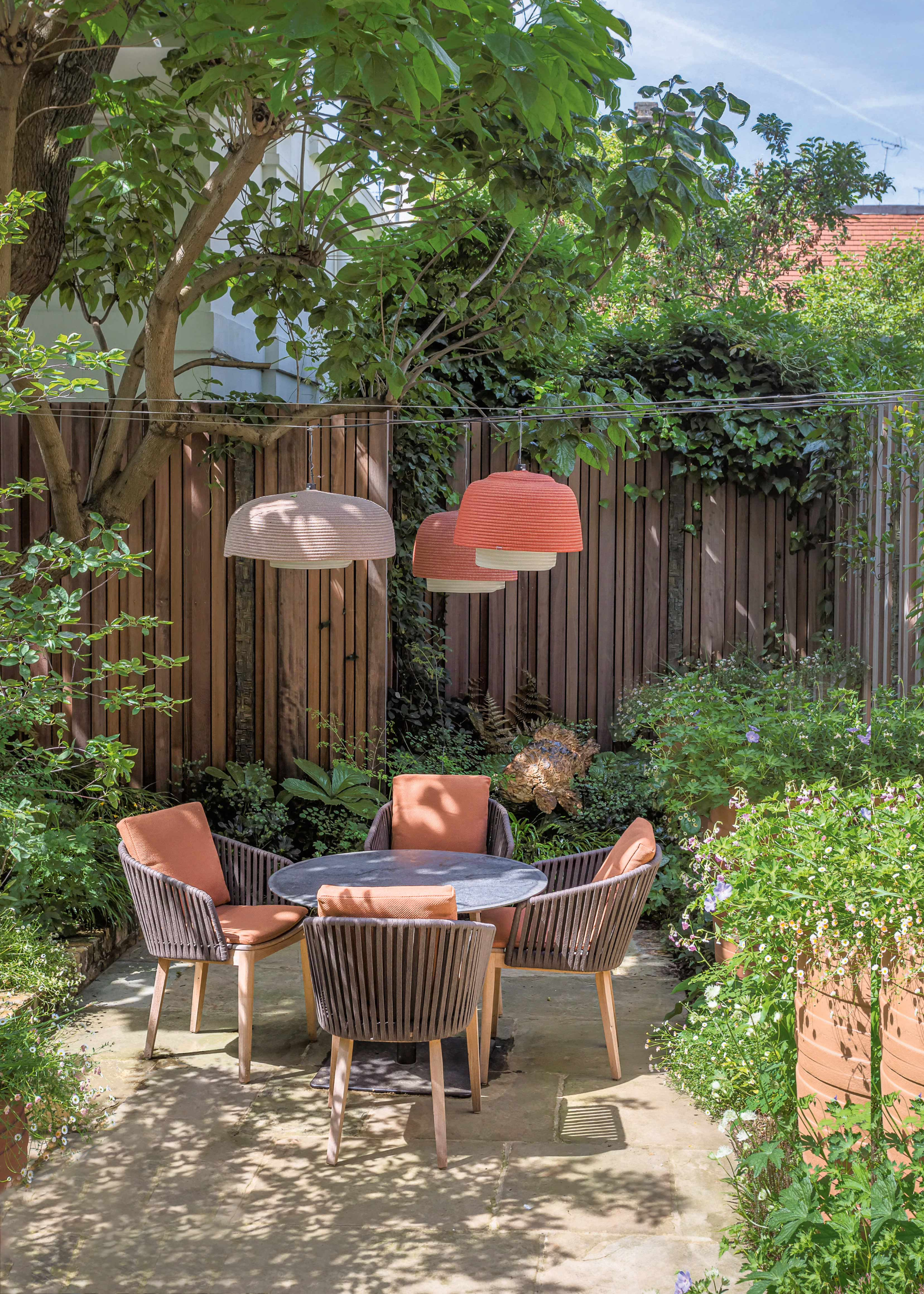
The structure of urban gardens means that even though you may technically be in your own private space, you are never too far from wandering eyes. And nothing snaps you out of your sun-dazed relaxation than the realization that all your neighbours have their eyes on you. "Trees have the added ability to provide privacy from close neighbours and attract a plethora of wildlife," says Paula.
Bring in some fast-growing climbing plants for privacy, or utilize a 'living' privacy fence in your backyard. "Sitting away from the house and surrounding it by plants gives an immersive experience," adds Paula.
This can also help create a feeling of seclusion, making your garden feel like a private retreat from the outside world. "One of the most important factors is to hide fences and boundaries with planting as it removes the feeling of being hemmed in," Paula continues, "We will be generous with the width of planted borders so that layered planting, including mostly evergreens, will make boundaries disappear completely."
FAQs
What Are the Best Plants for Urban Gardens?
The unique environment of an urban garden is not ideal for all species of plants, so designing your garden based on the needs of the plants will help ensure they thrive throughout the year.
"When planning a planting scheme, I always aim for a garden that looks great all year round, offers seasonal interest, and can cope with increasingly extreme weather – from hot, dry summers to months of rain," explains Agata, "Evergreen provide structure and colour through every season and are easy to care for. In shady areas, I favour variegated and colourful foliage to brighten things up – plants like Fatsia japonica ‘Spider’s Web’, Phormium ‘Evening Glow’, Euonymus japonicus ‘Pierrolino’, and vibrant Heucheras thrive with little fuss and keep the garden looking vibrant in winter."
Try to choose robust, durable plants that can survive the rapidly changing seasons so your garden won't look depleted come winter. "Choose plants that are drought-tolerant, adaptive to temperature variations, and pollution-tolerant. Opt for low-maintenance varieties and include native plants where possible," says Kate, "Small and medium-sized trees are recommended. There is a wide variety to choose from, but my top picks would be small varieties of Japanese maples, flowering cherries, Amelanchier, and Magnolia grandiflora."
Garden designer Charlotte Rowe adds, "We love planting trees in urban gardens where, if at all possible, but they need to be carefully selected. For example, we use a lot of Amelanchier lamarckii and Osmanthus, which can be kept small but add value to the garden. All plants need to be tolerant of the prevailing conditions. For example, London gardens normally have heavy clay and are often shady so we use a range of Euphorbias and small Prunus lusitanica and Taxus baccata and perennials such as Astrantia do very well."
City spaces usually require different ideas for outdoor living, than those in the country, but urban gardens can be as beautiful. Play to their strengths, whether it's extreme sun on a roof terrace or plenty of shade in an overlooked backyard.
By working with what you have, and adopting some of the ideas outlined above, you can create an urban garden that's easy to care for and enjoyable to spend time in.
Jacky Parker is a freelance lifestyle journalist and writer, producing a wide range of features for magazines and digital platforms. She has written for Livingetc and its sister titles, Homes & Gardens and Country Homes & Interiors for more than 15 years, both as a freelance contributor and as Acting Digital Editor and Acting Style Content Editor, regularly reporting on the latest interiors, gardens and wellness inspiration, speaking to experts in their respective fields, and discovering the best tips.
Jacky has also written for other publications, including Sunday Times Style, The Telegraph, Architectural Digest, House Beautiful, ELLE Decoration, Red, Grand Designs and more.
- Maya GlantzDesign Writer
